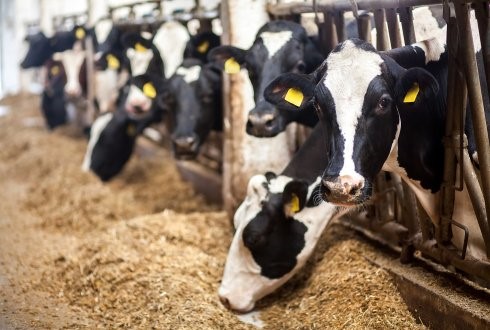WUR updating dairy cattle energy requirements
Energy required for maintenance has increased significantly since 1975, when Dutch net energy system for dairy cattle was developed.
February 4, 2020

The energy requirements for maintenance of modern dairy cattle are higher than in 1975, the year the Dutch net energy system (the VEM system) for dairy cattle was developed, Wageningen University & Research (WUR) said.
WUR researchers carried out an experiment in 2018 with Holstein Friesian cows in climate respiration chambers and found that lactating cows require, on average, 16% more metabolizable energy for maintenance (MEm), while dry cows need 26% more energy for maintenance.
Results from this experiment, combined with data from literature, also suggest that the conversion of ME in body reserves proceeds less efficiently during the dry period than during lactation, an announcement from WUR said.
Wouter Spek of Wageningen Livestock Research (WLR) showed that the conversion efficiency depends on the dietary ME source (fat, starch or protein) on one hand and on body tissue that is accreted (fat or protein) on the other hand.
In 1975, Van Es determined a MEm of 488 kJ/kg of metabolic bodyweight per day, WUR explained, adding that by around 2015, studies in the U.S. and the U.K. determined a higher MEm requirement of around 700 kJ/kg of metabolic bodyweight per day.
The MEm increase is accompanied by an increase in the efficiency with which ME is utilized for milk production (kL). Spek's experiment estimated an MEm requirement of 700 kJ/kg of metabolic bodyweight per day with a kL of 0.70 for dairy cows with high milk production, 534 kJ/kg with a kL of 0.60 for cows with low milk yield and 614 kJ/kg with a kL of 0.57 for non-lactating cows.
The milk production of dairy cattle has increased over the past decennia, the digestive tract of the cows per kilogram of bodyweight has become larger and the blood flow to organs and tissues has increased, WUR said. The energy requirement for maintenance has, therefore, significantly increased since 1975, meaning it's time to update the Dutch VEM system.
In follow-up research, the data of this experiment will be combined with data of other recent climate respiration chamber research, which will then be used for updating the VEM system for dairy cattle, WUR said.
This study was financed by ZuivelNL and the Dutch Topsector Agri&Food. Results will be implemented in the CVB tables.
You May Also Like

.png?width=300&auto=webp&quality=80&disable=upscale)

